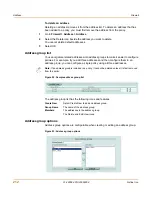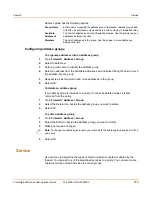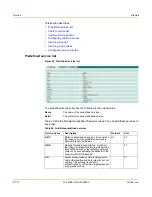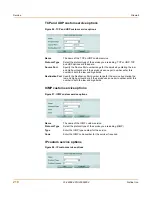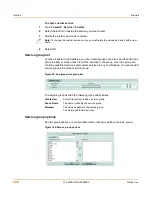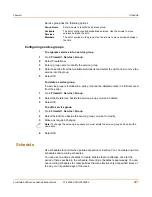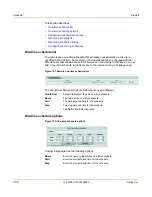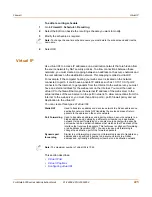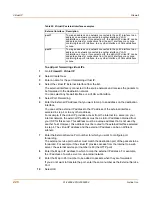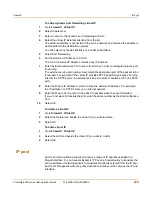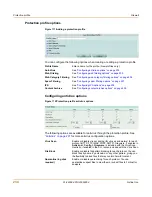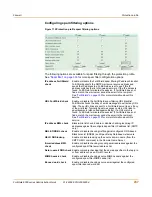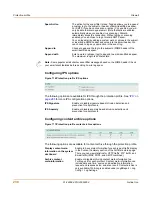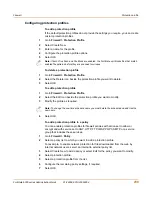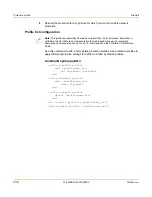
Firewall
Virtual IP
FortiGate-5000 series Administration Guide
01-28008-0013-20050204
225
To edit a recurring schedule
1
Go to
Firewall > Schedule > Recurring
.
2
Select the Edit icon beside the recurring schedule you want to modify.
3
Modify the schedule as required.
4
Select OK.
Virtual IP
Use virtual IPs to access IP addresses on a destination network that are hidden from
the source network by NAT security policies. To allow connections between these
networks, you must create a mapping between an address on the source network and
the real address on the destination network. This mapping is called a virtual IP.
For example, if the computer hosting your web server is located on the network
connected to port3, it could have a private IP address such as 10.10.10.3. If port2
connects to the Internet, to get packets from the Internet to the web server, you must
have an external address for the web server on the Internet. You must then add a
virtual IP to the firewall that maps the external IP address of the web server to the
actual address of the web server on the port3 network. To allow connections from the
Internet to the web server, you must then add a port2
->
port3 firewall policy and set
Destination to the virtual IP.
You can create three types of virtual IPs:
This section describes:
•
Virtual IP list
•
Virtual IP options
•
Configuring virtual IPs
Note:
To change the one-time schedule name you must delete the schedule and add it with a
new name.
Static NAT
Used to translate an address on a source network to a hidden address on a
destination network. Static NAT translates the source address of return
packets to the address on the source network.
Port Forwarding
Used to translate an address and a port number on a source network to a
hidden address and, optionally, a different port number on a destination
network. Using port forwarding you can also route packets with a specific
port number and a destination address that matches the IP address of the
interface that receives the packets. This technique is called port forwarding
or port address translation (PAT). You can also use port forwarding to
change the destination port of the forwarded packets.
Dynamic port
forwarding
Similar to port forwarding, dynamic port forwarding is used to translate any
address and a specific port number on a source network to a hidden
address and, optionally a different port number on a destination network.
Note:
The maximum number of virtual IPs is 1024.
Summary of Contents for FortiGate FortiGate-5020
Page 86: ...86 01 28008 0013 20050204 Fortinet Inc Dynamic IP System DHCP ...
Page 118: ...118 01 28008 0013 20050204 Fortinet Inc FortiManager System Config ...
Page 254: ...254 01 28008 0013 20050204 Fortinet Inc CLI configuration User ...
Page 318: ...318 01 28008 0013 20050204 Fortinet Inc CLI configuration Antivirus ...
Page 350: ...350 01 28008 0013 20050204 Fortinet Inc Using Perl regular expressions Spam filter ...
Page 370: ...370 01 28008 0013 20050204 Fortinet Inc CLI configuration Log Report ...
Page 382: ...382 01 28008 0013 20050204 Fortinet Inc Glossary ...
Page 402: ...402 01 28008 0013 20050204 Fortinet Inc Index ...


